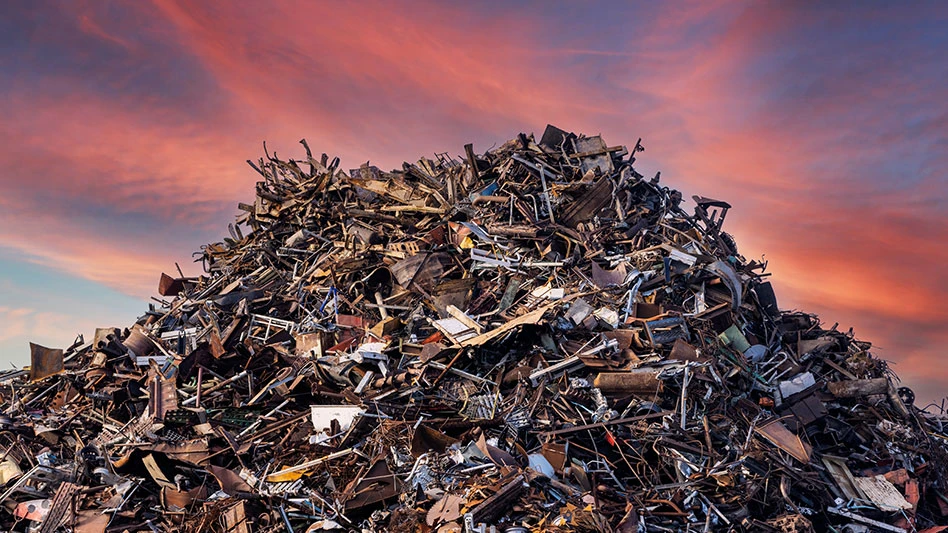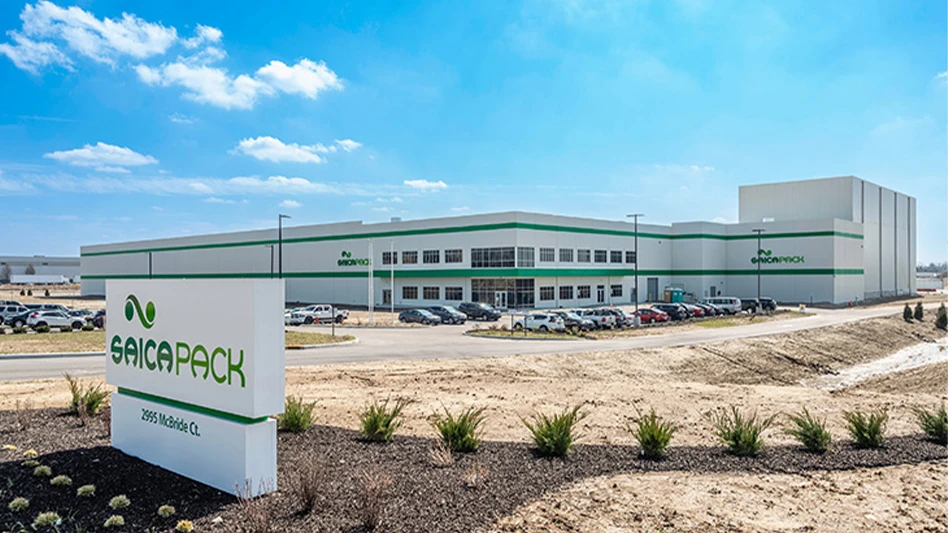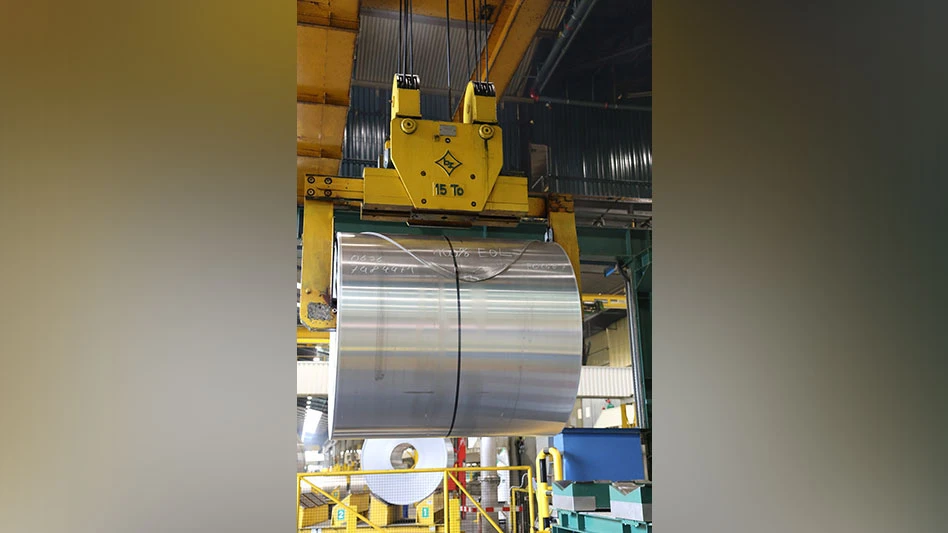Northern California's Specialty Crushing is a crushing contractor that finds its independence is an advantage.
Finding more markets. Constantly adjusting the tipping fees to keep material coming in. Stationary, portable, and mobile. Dealing with regulators and regulations. Bids. Maintenance. Employees. This is the world of a concrete/asphalt recycler, and it is one that Tom Chasm, president, Specialty Crushing, has learned in the dozen years since he opened up shop in the Oakland/San Francisco Bay area. Today, Specialty Crushing crushes more than one million tons of concrete and asphalt per year with its six "portable" crushing spreads, although two of the systems rarely move and serve the company’s recycle yards on the San Francisco Bay.
Even in "environmentalist" California, where a law (AB939) requires a certain amount of recycling, there were many barriers for Specialty Crushing to overcome when it started up. First, many municipalities would not accept recycled concrete/asphalt as road base on their jobs. Chasm says he used to explain to the holdouts that for years natural aggregate producers had been using their low-end product for road base, and their better material went into the ready-mix concrete and the hot-mix asphalt. "Hence, the high-end rock was in the concrete and asphalt, and our products contained the best rock."
Arguments such as these ventually helped eovercome the opposition to recycled materials. Interestingly, one of the last municipal holdouts against recycled road base was ultra-liberal, tree-hugging Berkeley, which had one of the first MSW recycling systems in place in the country.
Chasm had his own barriers to overcome when he started the business in May 1989. First off, he didn’t know much about crushers. But he had examined the records of two local landfills that were closing and determined that they had been accepting a lot of concrete over the years. He also noticed that the availability of natural aggregate in the Bay Area was drying up and moving farther out, driving the price up. "So I put a prospectus together and went after some venture capital to start up the crushing business," says Chasm. The opportunity was there, he felt. Unfortunately, the money people felt all the recycling that was going to take place in the area was already taking place, and did not fund him.
That did not deter Chasm. He was able to convince a contractor to hire him to process concrete from a demolition site. Fortunately, he didn’t ask Chasm if he had a crusher. With that customer’s $60,000 down payment on the job in hand, he leased a Boeringer impact system and started work.
Then came the Loma Prieta earthquake of October 1989. This natural disaster caused the generation of large amounts of waste concrete, and there was a huge overnight need to process it to avoid the landfill. Recyclers sprouted everywhere. Specialty Crushing was in the right place at the right time, but as Chasm points out, "We had a crusher before it was fashionable."
Chasm has learned a lot running Specialty Crushing in the intervening years. For example, "Government can, through legislation and regulation, encourage recycling, but whether recycled or natural gets used is based on rock price and transportation," Chasm says. "That is all that matters to the contractor. He doesn’t care what it is and where it came from, as long as it does the job."
Another early lesson was the need for portability and quick set up. After the Boeringer, Chasm bought an older jaw/cone system. It was a good system, "but it took a month to tear it down and set it up," Chasm says. "I figured I needed something that could move quicker."
The company purchased one, then shortly thereafter a second, single-stage impact system from AMI-Thunderbird. "That increased our scope of work tenfold," Chasm says. Indeed, while the two impactor systems were kept busy, the jaw/cone sat for a nearly a year until Chasm could find a job for it.
The two AMI-Thunderbird systems are Model 1350s, according to Rick Andrews, Specialty’s vice president of operations. They are single chassis systems that move and set up in a day. It takes only six loads to move each system. Four people are on each system—a crusher operator, who is the top employee, a person on the loader, a picker and a person on the ground.
Either of the two systems can be paired as a secondary with the company’s newest crusher purchase, a Kolberg-Pioneer Rocky Trax that is a track-mounted 2649 jaw crusher with 48-inch flywheels. Power is provided by two 75 HP hydraulic motors on pivot-mounted bases. The two-stage crushing system formed has several advantages for onsite crushing, Andrews says.
A main advantage is reduced material handling. Specialty often works at canyon sites that are filled with rubble and leftover concrete. Excavators would have to mount the pile and load the material on trucks to get it down to the single-stage crushers, which often had only a postage-stamp-sized space to operate on. "We decided it would be easier to put some sort of primary on top of the pile in the canyons and run a conveyor down to the secondary," says Andrews. "We walk the jaw to the top of the pile and feed it."
He adds that it is a lot cheaper to crush and convey than to truck and re-handle. "We figure we are saving $1.70 per ton by using the track-mounted primary." They did try just to crush at the top of the pile, convey to a surge pile and then feed the secondary impactor, but that costs about 50 cents more per ton. With the two-stage system in place and running, Andrews says the company can process 500 tons per hour, even concrete with rebar. On these types of jobs Andrews says they operate just like at a quarry, working different levels and faces, and working the pile down.
The original idea for using a track-mounted plant came to Tom Chasm during a visit to Bauma, the large construction equipment show in Germany. Specialty had trouble keeping its excavators maintained, and was looking for a way to rely less on them. At Bauma, "it seems everything over there, even the port-o-potty, was on tracks," Chasm says. Chasm knew he wanted a jaw crusher to help cut down on preparation time and rely less on the excavators. He thought a track-mounted jaw would be ideal.
"When we were digging in the canyons with an excavator with a pulverizer attachment we would only get 70 percent of the material that was immediately ready to be fed into the impactor. But with the track-mounted jaw, 95 percent was ready for the impactor. We could eliminate a pulverizer and an excavator."
Recycling Yards
The new-age two-stage system is not the only interesting operation Specialty has. Specialty Crushing has three retail yards. One is on the bay at Pier 96 in San Francisco, another is at a decommissioned Army base at the east end of the Bay Bridge, (this one has water access), and the third is east of Oakland in Antioch. These urban quarry sites have skid-mounted units with multiple finished product capabilities.
The company also has three complete portable crushing spreads, a portable screening division, and a mixing division with a cement-treated base plant that does a variety of mixing jobs, including clay and rock for landfill caps, brick, cinder block, glass and sand for controlled density fill. The company is currently adding a sorting line and concrete plant to its San Francisco operations.
While Specialty is not barging material in and out of its plant on the water yet, Andrews says barges are the future in the Bay area. "Every highway here is overloaded with trucks. I can see the day when we will move the material to spots along the bay, and then load it onto trucks for shorter trips."
The yard in Emeryville is probably Specialty Crushing’s most sophisticated. It sports a three-stage crushing system and is capable of making seven different products, four of them at once. It has a 2854 Pioneer jaw, a 1010 Kobelco impactor, and JCI 1200 impactor as a tertiary machine. Two 5 foot x 16 foot, triple-deck Thunderbird screens handle the product making.
Chasm has noted the difference between running a recycling yard and doing custom crushing. "With custom crushing, we have no control over what is the final product," he says. "For our plants we have to make different types of products in order to differentiate ourselves."
In 1995 he leased his first yard and started processing material and selling retail. The downtime between contract crushing jobs was used to process at the yards. "But I figured out the crusher-for-hire business was robbing the retail business, which was proving to be very profitable," he says. Even though Specialty charges a standard mobilization fee, it was costing a lot of money to move those wheel-mounted crushers in and out of the yards, and he wanted to be more cost effective. He came up with the idea to mount crushers for the yards on skids. That way they could still be portable if there was a need to move them (although it takes a crane to move them), but he could leave his wheel-mounted units to roam the countryside. "The money we saved on moving crushers in and out of the yards made the payments on new, skid-mounted crushers," he says.
The recycling yards allow Specialty more freedom to experiment with more products. The California road base-from-recycled market has long been strong, and there are many players in it. Andrews says that virtually all the contract crushing work is to make road base. But the urban quarries only make base about 50 percent of the time, and spend 25 percent of the time making two sand products, and 25 percent a drain rock product. One of Chasm’s latest projects is a cement-treated base that is used at airports. Specialty Crushing has a few more such twists up its sleeve, says Chasm. It is new products such as these that Chasm says will fuel the growth of his company and industry in coming years.
Not that there aren’t a few challenges to be worked out. "The biggest challenge we all face is finding people to operate the equipment safely and to properly maintain the equipment," said Andrews.
"Another challenge is to maintain infeed of materials. We don’t have a quarry and guaranteed raw material," says Andrews. "We have to constantly alter the price of tipping fees to make sure of infeed. If you need it, you drop the price. That means we have to be on top of where the waste stream is going, and make sure we get our share of it." He adds that currently the situation on getting material is the worst he has seen in six years with the company.
Sponsored Content
Labor that Works
With 25 years of experience, Leadpoint delivers cost-effective workforce solutions tailored to your needs. We handle the recruiting, hiring, training, and onboarding to deliver stable, productive, and safety-focused teams. Our commitment to safety and quality ensures peace of mind with a reliable workforce that helps you achieve your goals.
Sponsored Content
Labor that Works
With 25 years of experience, Leadpoint delivers cost-effective workforce solutions tailored to your needs. We handle the recruiting, hiring, training, and onboarding to deliver stable, productive, and safety-focused teams. Our commitment to safety and quality ensures peace of mind with a reliable workforce that helps you achieve your goals.
The situation went to its extreme when Specialty Crushing took on the job of recycling a huge former Montgomery Ward building in Oakland. What to do with the building—should it be preserved, recycled, or what—was debated publicly for years before teardown and recycling was decided. Then it was debated on what should be paid to do the recycling. Specialty Crushing offered to crush it for free, which was a price no other recycler wanted to meet.
There turned out to be 150,000 tons of material on the job, and within six months Specialty had sold 120,000 of that to 65 different customers, with the remaining 30,000 left on site for the new building. Chasm insists the company made money on the project.
The flat parts of the Bay Area are their own challenge, Chasm says. Anything flat is probably made up of fill from various natural disasters dating back to at least the famous 1906 earthquake. That makes the ground very soft, and crushers are likely to settle in the fill. What to do? "You just have to expect settlement and keep raising the plant," says Chasm. "We had one job in San Jose where we had to re-block 11 times. Eventually it settles somewhere, and the duration of most of our jobs is short, before the crusher can really settle."
Many Players
Over the years Chasm has seen many companies enter the concrete/asphalt recycling business. "They are contractors of all stripes, especially demo contractors. One demo contractor even has his own yard now."
But Chasm feels Specialty Crushing has its own advantage by not having a second business. "As an independent contractor, we are not affiliated with a demolition or excavating company. So if a demo or excavating contractor is looking to get some crushing work done, we are not automatically excluded—because we are not a competitor."
The author is associate publisher of C&D Recycler and can be contacted via e-mail at .
Get curated news on YOUR industry.
Enter your email to receive our newsletters.

Explore the March 2002 Issue
Check out more from this issue and find your next story to read.
Latest from Recycling Today
- Steel Dynamics cites favorable conditions in Q1
- Hydro starts up construction in Spain
- Green Cubes unveils forklift battery line
- Rebar association points to trade turmoil
- LumiCup offers single-use plastic alternative
- European project yields recycled-content ABS
- ICM to host colocated events in Shanghai
- Astera runs into NIMBY concerns in Colorado








